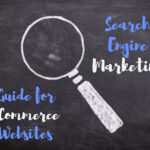Do you also know search engine marketing can double your business revenue? Are you utilizing the full potential of SEM? This in-depth search engine marketing guide will explain you step-by-step approach.
With the ever-increasing competition to rake in more traffic than ever before from the SERPs, more businesses than ever before are falling for the “we can rank your page on Google” trap.
So, let me be clear about this. Numerous factors influence your ranking; however, Google always has the upper hand on a larger scale.
No matter how much you try to find a shortcut, Google is largely responsible for displaying your website on the top. So, how are some online businesses growing rapidly? Because they’re investing time, resources, and money in SEM.
People often confuse SEM as a parent category for PPC and SEO – which would’ve been true a few years ago.
However, now the term is strictly used for PPC (pay-per-click) because it’s a part of it (if not entirely the same.)
What Is SEM?
SEM, or search engine marketing, is an online paid marketing that boosts your products or services on the top of search engine result pages (SERPs).
SEM is triggered when a user searches for a specific keyword that you’ve targeted using the right strategy.
Here’s what will happen when you search for “shoe shopping online:”
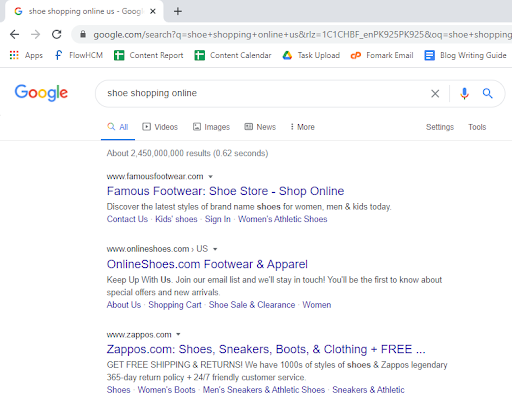
As you can see, the website link to “Famous Footwear” in the US shows up on the top, and that’s because they used the keyword “shoe shopping online” in an effective way.
However, the Google bots keep changing this up. For example, we can see Famous Footwear on the top right now, but later Zappos might take the first position.
Again, that depends on how effective your SEM strategy is, which means you need to modify it to stay on the first page.
Did you know? 75% of online users don’t feel the need to go on the second page of search engine results. That’s the power of an effective SEM strategy that was planned and executed accurately.
Differences Between SEM And SEO
There was a time when SEO was considered a child marketing strategy under SEM. Basically, any online marketing strategy was related to SEM – which sounds somewhat logical.
However, over the years, the two have become separate entities. SEM has evolved, and so has SEO.
In essence, they both mean the same but don’t fall under different umbrellas.
SEM is a paid online marketing strategy that uses paid ads and keyword-bidding to display certain websites on the top.
SEO, or search engine optimization, is the free-of-cost and unpaid online marketing strategy. The strategy involves businesses using keywords that trigger the search results and display their website on SERPs’ top.
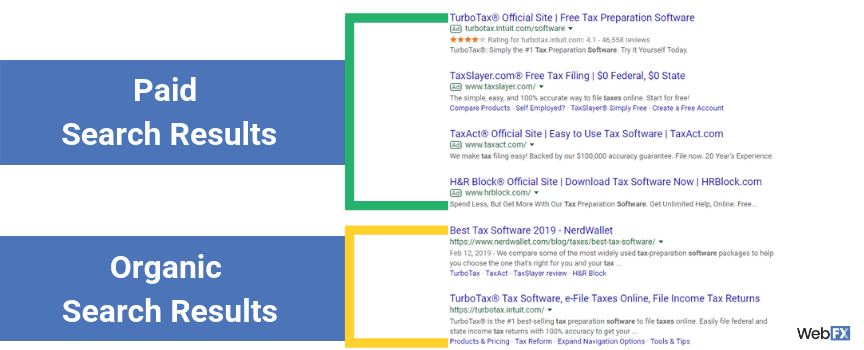
Image Source: WebFX
Pros Of SEM
So, why do businesses prefer spending on SEM strategies to promote their brands online? Here are some benefits that they take advantage of with SEM:
Quickly Expand Your Online Reach
Imagine walking into a shop to buy a juice box. As a customer, you would want instant service, no? The same goes for businesses that market their products or services online.
Businesses that choose to implement SEM strategies are looking to promote their businesses fast, and an SEM strategy, unlike an SEO strategy, reaches audiences quicker and in a shorter time.
Marketers need to know which keywords to bid on; once they secure the position, they’ll only be paid by the click. This ensures reach and online brand recognition; however, you need a handsome budget to yield fruitful results.
If you bid on the right ads, there’s a 41% chance the paid clicks will place in the top three ads.
Lower Bounce Rates
Owning a shoe store that doesn’t get many visitors is bad for business and hurts your income in the long-run.
Likewise, as an e-commerce store owner, I’m certain that one of your top-most concerns is “how to fix the bounce rate?” And truthfully, it should be. There are only a few SEM strategies for e-commerce sites you can implement to make your bounce rates better.
Bounce rates are the figure which indicates how much time visitors spend on your website.
Here’s the tricky part.
A negative bounce rate is a good thing for your e-commerce website. The lower bounce rate indicates that lesser viewers are abandoning your website.
A rapid increase or surplus in bounce rate means visitors are leaving your website without engaging with it – you don’t want that!
This is where SEM strategies play a vital role – they make your bounce rate better. How? When you utilize paid ads, your website appears on the top, making it credible for users, and they choose to engage with it before clicking any other website link. The more users visit and stay on your website, the better for business.
An upcoming 2020 trend is “voice search” on websites, decreasing bounce rates because people will enjoy voice searching over typing. In fact, by 2022, 55% of USA households will install smart devices.
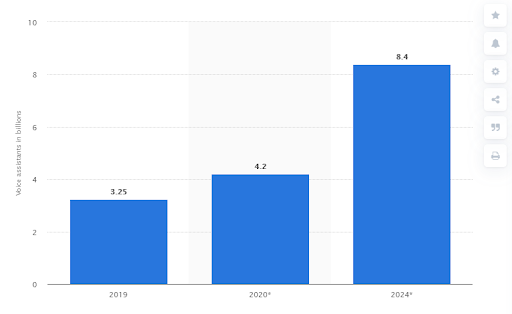
Just look at the number of voice assistants as per Statista:
Did you know? Seven out of ten internet users prefer voice commands over typing them?
Create a Brand Identity
In the digital age we’re experiencing, I think it’s fair to say that online paid marketing establishes your brand identity.
Yes, traditional billboard, TV, and radio marketing is still a thing, but you need to invest in SEM because the world is choosing to go online.
When the right keyword bidding pushes your brand to the top, it improves brand recognition and identity.
Higher placement on the search engine result pages means more traffic, loyal customers, and a surplus in profit.
If you’re thinking about investing in display ads to create a brand identity, I’d say now is a good time to do that! According to Statista, the highest CPC for Google display ads $1.49 for dating and personal websites. Not so bad, right?
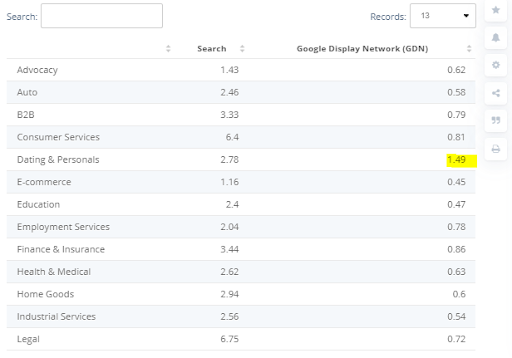
Boosts Local Audience Reach
A local business is better off marketing to the local audience because of the benefits it offers.
Approximately 61% of mobile users will admit that they prefer a local store with a mobile-friendly website.
Your goal is to reach local customers to boost sales, decrease bounce rates, and maintain a profit surplus.
Once you deploy your SEM strategy, it’ll help your brand reach your entire local audience, improving your reach and ensuring you become a preference for people in your locality.
One way to reach a local audience is by creating brand awareness. Google predicts by 2021, and paid ads will be 80% responsible for improved brand awareness.
Cons Of SEM
Of course, something as significant as SEM has its cons, too – if you ask me, the pros outweigh the cons.
However, please don’t take my word for it. Let’s unveil the cons so that you can decide for yourself.
It’s Not Cost-Efficient
Did you really expect SEM to be light on the pocket? Think again!
When you start bidding on keywords, you’re basically fighting other online businesses for the SERPs’ top spot.
Once you achieve your goal, the pricing starts and search engines charge you for every click your website receives.
However, at times this may not play the way you’ve planned it. Some businesses too highly on SEM strategies, which can result in too much money being lost.
So, take my word for it; if you’re a small business or start-up, stay away from SEM (for now at least!).
Time-Consuming Process
I think this is the most significant drawback of choosing SEM strategies.
A marketeer needs to understand SEM, identify and create the right strategies, and deploy the SEM strategy.
There are online courses from Google and independent companies like Modern Millionaires that can help you learn more about generating leads through Google Ads. You can learn more here: https://netbooksreview.
With SEM, it’s a constant race to stay on the top, and the marketeers have to give each campaign an ample amount of time. They also need to take measures to ensure nothing hurts their ranking on the SERPs.
Fear Of Penalties
Some businesses understand that SEM is costly and time-consuming, so they decide to implement shortcuts deemed unethical by the search engines.
While that may seem like a good option, trust me, you’re setting yourself and your brand up for long-term failure.
The human-made search engine bots are brilliant, and they automatically penalize or even block such websites for unethical conduct.
Users can’t see or engage with a penalized website because they’re basically from surfacing. Moreover, if your website gets penalized, it ruins your reputation and brand image.
Tips For Creating The Right SEM Strategy
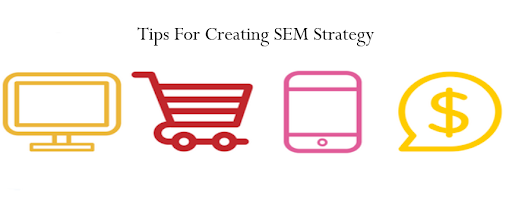
An SEM strategy only proves fruitful when it’s drafted the right way. An accurate strategy can boost sales and promote your brand online to users nationally and globally.
Let’s discuss some tips you can use when you set out to draft a strategy:
Choose An Appropriate Search Engine
The top search engines are Google and Bing, and their SEM tools are known as Google AdWords and Bing Ads, respectively.
Choosing a platform can be slightly tricky (but also not really) because Google has more fame. However, if you still need to choose, ask yourself this:
- Where is more of your target audience?
- Where does your audience shop?
- What are SEM campaigns your competitors running?
The answers will easily reveal which search engine platform is right for you.
Here’s a screenshot from Statista, which will guide you in the right direction for choosing a search engine.
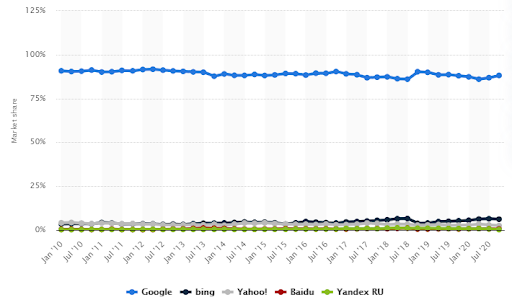
Too Many Campaigns Spoil Your Effort
It’s always a smart idea to start small and low-key.
One campaign at a time can guarantee more success as compared to multiple ones. If you try to run too many campaigns, you’ll get confused in each campaign’s mechanisms, lose track of the data, and fail to yield the results you set out to achieve.
Initially, start with a maximum of two campaigns and then judge each’s results, revive those, and add more (if need be).
Focus On Keyword Gems
Keyword gems are keywords that have helped users locate your website even if it’s low traffic or fewer conversions.
A good SEM strategy should revolve around using those keywords because they’re already getting traffic, and a little SEM boost will make them perform better.
The keyword gems also act as a starting point for keyword research and SEM campaigns. Some businesses also come up with variations.
Make The Campaigns Consistent
Imagine you saw a sale ad at your favorite clothing store. The next thing you notice is the sale is starting today. You get excited, click the ad, add your favorite items to the cart only to find that the items are out of stock.
How does that make you feel? Betrayed and annoyed.
Likewise, if you mess up even a little with your SEM ad campaigns, you can risk creating a brand image that hurts business in the long-run.
When setting up your SEM campaign, you need to ensure that ads are consistent with what you show on your website. For example, if you’re ranking on the keyword “discount codes,” the website link should redirect to a page that tells users how to avail of the discount.
While you can definitely handle your SEM campaigns yourself, it’s not advisable to do so if you are new to this since the cost ramifications can be too high to risk it. Therefore, it’s recommended that you hire an agency with expertise in managing paid SEM campaigns like Cydomedia to ensure that you get worth every dollar spent on your campaign.
The Best SEM Tools
Now you’ve reached the part of this blog where you get to plan and deploy an SEM strategy to increase website traffic and increase your sales.
Here are some tools you can use to create a campaign:
Google AdWords
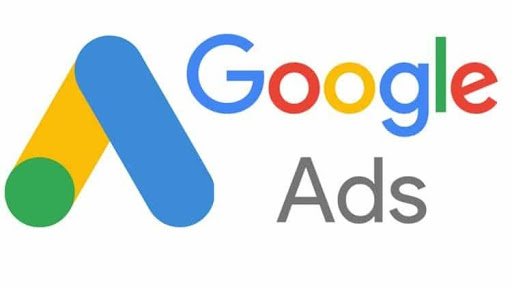
Image Source: Savvy Search Marketing
Google AdWords is quite handy and flexible to use. It might seem not very easy at first, but once you get the hang of it, the tool yields fruitful results.
It’s a great tool to start search engine marketing.
SEMRush

Image Source: StickPNG
SEMRush is much like Google AdWords; however, it allows businesses to analyze their competitors’ SEM campaigns and build their campaigns around theirs.
This strategy helps in building the right strategy and bidding on the keywords that matter.
In Conclusion
So, that’s done!
I hope with the tips, tools recommendations, and SEM explanation, and you can create something amazing that helps you achieve your goals.
With that said, I don’t see a reason why you can’t start a campaign today. Good luck with your SEM campaign!


